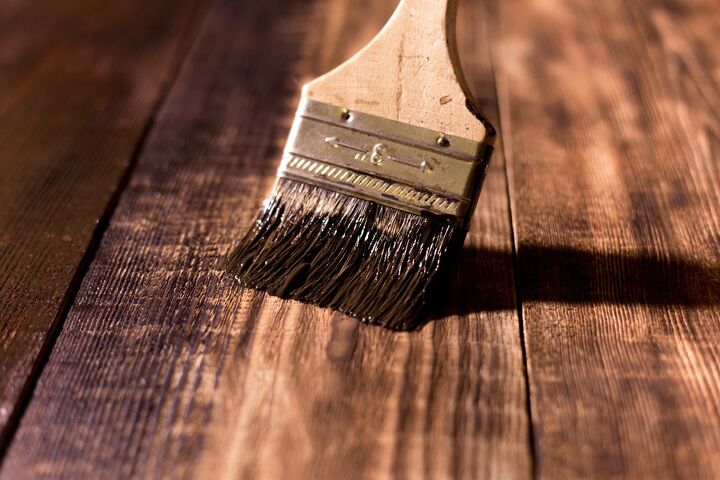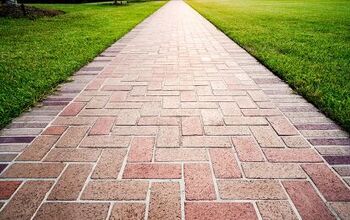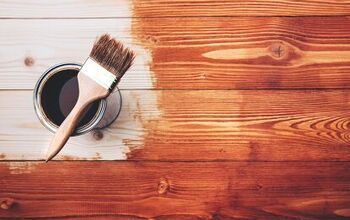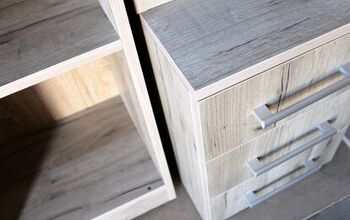Can You Stain Dark Wood Lighter? (Find Out Now!)

In my kitchen, I have dark mahogany-stained cabinets. They’re an eyesore, really. I’ve often fantasized about having light birch wood cabinets instead. While I might be a renter (and therefore not allowed to change the cabinet colors), thinking about how nice it would be to be able to stain my cabinets a little bit lighter. But, is that actually doable?
While it is possible to lighten darkened woods using bleaches or washes, most stains will only darken the color of the wood. If you want to lighten wood, you need to remove the stain and bleach it. The only time that you might be able to stain dark wood to a lighter shade is by using a specialized gel stain to do the trick.
Trying to turn light wood darker is a cinch. Turning dark wood lighter, unfortunately, is not. If you’re wondering what you should expect, this guide will help you.
Do You Need Painting or Staining Services?
Get free, zero-commitment quotes from pro contractors near you.

Before You Begin: Understanding The Lightening Process
Before we start, it’s important to understand a couple of things about lightening your wood. It’s not always a good thing to do, and in fact, can actually be harmful to the wood. Here’s what you should be aware of:
- The vast majority of woods will need to be stain-stripped in order to get lighter. The truth is that you can’t just swab on a stain and have it turn lighter than the stain that’s currently on it. It’s a process. You have to remove the stain that’s already there before you can get any results.
- Oh, and you also might need to bleach the wood in order to get it to be lighter. Most projects will have a need to bleach wood after the stain has been stripped off. You will need to have a very light canvas in order to get your wood to be lighter than its natural grain.
- Certain woods just don’t do well with lightening, period. Walnut, mahogany, and cherry are woods that look great but don’t take to lightening well. Pine, birch, and oak are better options.
Information On The Traditional Wood Lightening/Staining Method
If you want to lighten dark wood that’s already been stained, you will have to remove the original stain and topcoat before you try it. This involves sanding down the wood, using wood stain remover, and also just cleaning up the area. After that, you have two primary options as far as re-staining your wood:
- You can apply a new lighter shade of wood stain directly to the newly bared, acid-treated wood. This is a great move if you are working with a traditionally light type of wood like birch and were able to remove most of the residue from the last stain. Once the stain is on, you will be able to enjoy that shiny new wood color.
- You may also need to apply bleach before you stain your wood. Darker wood stains or wood types will often need to be treated with bleach. This is a whole ‘nother tutorial, but it’s doable. It’s just good to know that you might have other steps to the process.
- Or, you can remove the darker stain and then use a clear seal. If you are looking for a bare wood look, this is also an option to pursue.
How To Use Gel Wood Stains For Lightening
Gel wood stains are different from typical wood stains in a lot of ways. They are good choices for people who want to have a thicker veneer and want to get a slight lightening effect. Here’s what you will need to do:
- Remove the topcoat and current coat of stain. Stain stripper is a good tool for this. To use it, follow the instructions on the stripper can. Some stains (particularly dark ones) may need to have multiple passes before they get the stain off.
- Sand down the area. If you are dealing with cabinetry, don’t worry about keeping it horizontal. The good news about gel is that it’s fairly easy to use on a vertical area. So, don’t worry about uninstalling your cabinetry. You can keep them in place if you are fastidious about it.
- Apply the gel coat evenly. You can use a brush or a rag for this. You don’t need to apply a very thick coat. Rather, try to get a thin, even layer across all the wood.
- Let the coat dry. This can take several hours. You can refer to the gel stain’s can to get a better idea of the drying timeframe. When waiting for the coat to dry, do not put anything on the wood. It can mess up the stain.
- Top with the sealant of your choice. Different gel stains will work with different sealants. To make sure that you get the right type of sealant for your cabinetry, check the gel stain’s label.
How Can You Tell If A Gel Stain Will Lighten Your Dark Wood?
In a lot of cases, the gel stain will advertise that it can help stain your wood lighter. However, it’s important to remember that your gel stain will always have to be a lighter color regardless of whether it has a wood lightener added in or not. If the stain isn’t lighter than what you already have, it won’t lighten up your home.
Moreover, you still need to remove any other stain that’s on your wood to get the results you want. There isn’t a gel stain out there that can be applied directly to sealed wood without having bumps, runs, or poor “catching.” In other words, your best bet is to assume that gel might offer a shade or two of lightening—and that’s only if you want to apply it properly.
What Should You Do If You Want To Lighten Up Your Cabinetry But Can’t Stain It The Shade You Want?
The truth is that there may be some occasions where staining your cabinets isn’t good for the wood or your sanity. If you find yourself in this situation, don’t panic. There are several ways to fake it until you make it:
- Paint. It’s the oldest trick in the book. Painting your cabinetry is a smart move.
- Contact Paper. Stick on the color that you want. When you’re tired of it, peel it off.
- Replacement. I mean, it’s still an option.
Do You Need Painting or Staining Services?
Get free, zero-commitment quotes from pro contractors near you.

Related Questions
What happens if you put a light stain over a dark stain?
If you add a light stain over a dark stain, your wood will not get lighter. Rather, it will give the wood stain that you already have a nice, gentle touch of extra color. This is often done to give a yellow stain a blueish tint, or to lightly adjust the overall color of the wood.
What should you do if you added too much stain to your wood?
This is one of the most common mistakes that you can have in woodworking, and it’s usually pretty easy to fix it. To remove some of the stain, take a rag and dip it in lacquer thinner. Then, gently wipe down the stain with the rag. You should be able to see the stain lighten up if you dab on enough of it. If that doesn’t work, you can also choose to sand down the area to pick up permanently stained portions.
Can you use household bleach to lighten wood?
While you can use household bleach to lighten wood if you know-how, the truth is it’s often a bad idea. Household bleach is very caustic and has notoriety attached to it for being damaging to wood. If you want to bleach wood, it’s better to go for wood bleach. This is formulated to be easier on wood, which means that you won’t have to deal with extreme warping or drying if you lighten it.
Related Articles

Ossiana Tepfenhart is an expert writer, focusing on interior design and general home tips. Writing is her life, and it's what she does best. Her interests include art and real estate investments.
More by Ossiana Tepfenhart



























